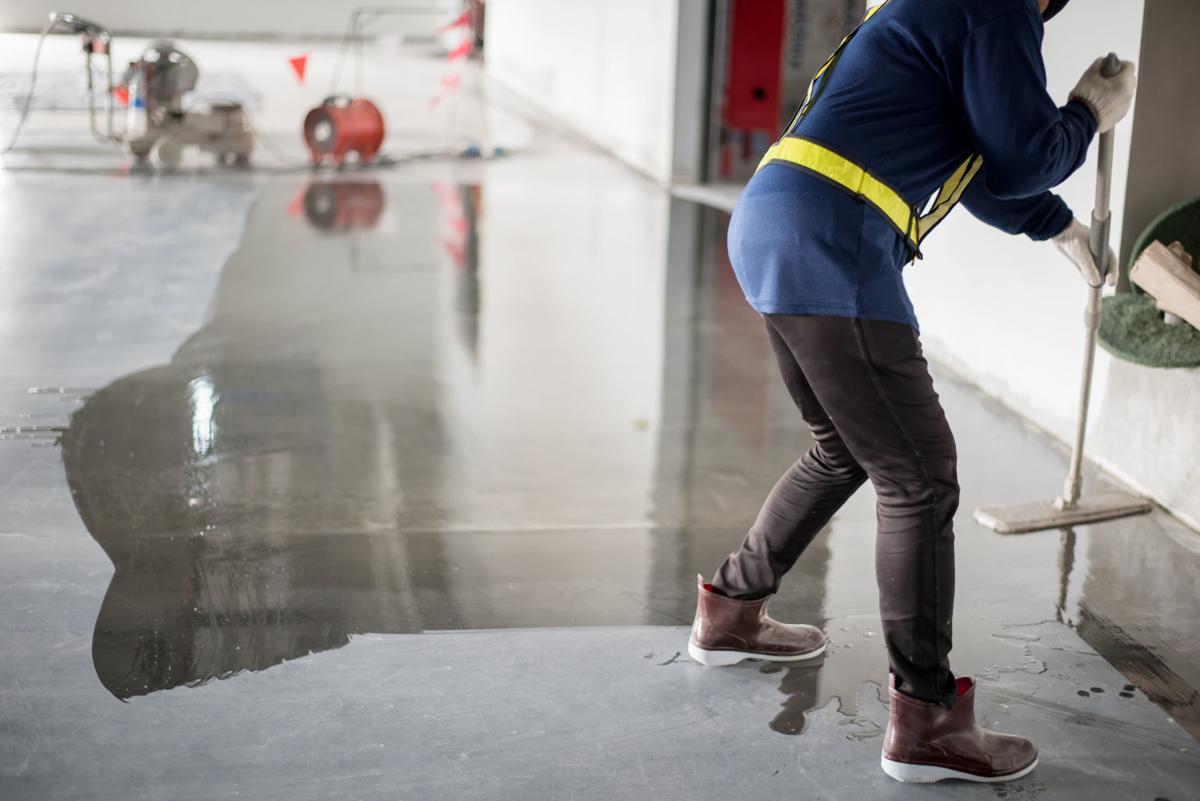QUESTION: I want to rip out the old carpeting in one room in my house to create a craft workshop for my wife. How can I make sure it’s a clean concrete surface that will require very little maintenance?
ANSWER: Once you get the carpet off, you’ll find a lot of tack strips that make divots in the concrete surface as well as glue left behind by the padding under the carpet. You have to clean all that off, including some paint from over-spraying done on the walls of the home originally. You may need to degrease the surface and patch it with plastic cement, as well as grinding it. Then you want to top it off with an epoxy polyurethane coating. This is a labor-intensive job. If you hire someone to do it, they can spend a whole day on demolition and preparing the base. It can take a week to complete the job depending on the size of the room.
Q: If we remove our carpeting and go with concrete floors in our house in Arizona, will the concrete be really hot in summer and cold in the winter?
A: Concrete will retain some of the heat or cold from the temperatures outside, but it shouldn’t be much different than the variations you have inside for a tile floor. When sun shines directly on a concrete floor or a tile floor, the temperature will be higher on the sunny surface.
Q: After pouring a concrete slab, how long do I wait before I can stain the concrete?
A: It depends on the time of year. All the moisture must be out of the slab before sealing the concrete. If you go ahead and seal and moisture comes up, it can wreck the finish. A moisture meter is the best way to determine moisture content. Check with the manufacturer of the stain for their requirements about moisture.
At this time of year at Rosie on the House, we get many questions about how to reduce an electric bill during the upcoming air conditioning season. Here are our suggestions:
No matter where you live in Arizona, sign up for the right utility plan that will suit your lifestyle. In the Tucson area, almost all Tucson Electric Power customers should get on the time-of-use plan that charges “on-peak” or higher rates at times when demand is often higher and charges lower “off-peak” rates the rest of the day. Call your utility to find out how you can change plans if needed.
Once you’re on the new plan, it will “reward” you for shifting use to off-peak times — away from the summer on-peak hours of 3 to 7 p.m. weekdays. The cost of your power will be lower at other times during weekdays. There will be lower rates as well on Saturdays, Sundays and major holidays. Weekends and holidays are also off-peak with lower rates.
More suggestions: Switch to using air conditioners, appliances and lighting mostly in off-peak hours; learn to limit your demand. Install timers on electric water heaters so they run mainly in off-peak hours. Set timers on pool and spa pumps to run in off-peak hours. Charge electric vehicles only in off-peak hours.
To see how you are doing, divide your total kilowatts consumed for a month by the dollar total of your monthly bill. Your spending goal should be 10 to 12 cents per kilowatt. If so, you’ll find your summer electric bill for a 2,000-square-foot home should be under $300.





